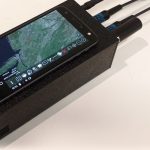February 24, 2020
Seven Solutions Sociedad Limitada, based in Granada, Spain, was one of 11 firms selected by the Department of Transportation to demonstrate GPS backup technologies, with tests to take place in March. The company provides time as a service, remote timing monitoring, GPS jamming protection and solutions for intra- and inter-datacenter synchronization, with up to sub-nanosecond precision.
Its core technology, White Rabbit, functions in both local and wide-area deployments. It provides a very stable time references over fiber in GPS-denied scenarios as a backup source or to complement other PNT solutions that require precise time and timing distribution.
[This story is the second in a series of 11 detailing technology from firms selected by the Department of Transportation (DOT) in August 2019 to demonstrate technologies that could be used to back up the services provided by GPS should GPS signals be jammed, spoofed or unavailable. See also Echo Ridge.]
Critical industrial, financial, military and governmental applications increasingly require accurate, reliable, and traceable signals for time and synchronization. Key fields of application include banking and finance, telecom networks and electricity grids. Accurate clocks across different nodes make possible key functions like consistency, event ordering, causality and the scheduling of tasks and resources with precise timing.
Two previous Inside GNSS stories explore in considerable technical detail White Rabbit’s functions and performance results. One describes a time service for the Madrid Stock Exchange, distributed using the White Rabbit network protocol over optical fiber. Scalable, Traceable Time for Datacenters explains a White Rabbit integration with GNSS.
In finance and e-commerce, clock synchronization is crucial for determining transaction order: a trading platform needs to match bids and offers in the order in which they were placed, even if they entered the trading platform from different gateways. In distributed databases, accurate clock synchronization allows a database to enforce external consistency and improves the throughput and latency of the database.
Network Time Protocol (NTP), the popular clock synchronization protocol via internet, is cheap and easy to deploy, but its accuracy is typically in the millisecond range. The Precision Timing Protocol (PTP) provides an accuracy of around 100 nanoseconds in a local, fully “PTP-enabled” network. If the network hardware is not fully PTP-enabled, synchronization accuracy can degrade by a factor of 1,000. Both NTP and PTP perform poorly under high network load.
White Rabbit is a collaborative project for the development of a new Ethernet-based technology to ensure sub-nanosecond synchronization and deterministic data transfer. The project uses an open-source paradigm for the development of its hardware, gateware and software components. Core hardware designs and source code are publicly available.
To achieve sub-nanosecond synchronization, White Rabbit uses Synchronous Ethernet (SyncE) for syntonization (frequency transfer), and IEEE 1588 Precision Time Protocol (PTP) to communicate time. A two-way exchange of the PTP synchronization messages allows precise adjustment of clock phase and offset. The link delay is known precisely via accurate hardware timestamps and the calculation of delay asymmetry. White Rabbit extends PTP in a backwards-compatible way to achieve sub-nanosecond accuracy. White Rabbit was originally conceived for synchronization of more than 1,000 nodes via fiber or copper connections of up to 10 km, but coverage of longer distances has been already achieved.
Currently, Seven Solutions provides industrial-grade solutions to address time synchronization requirements for the next generation of financial markets. In 2018, the Deutsche Börse, the German stock market, deployed and tested White Rabbit for accurate timing in the monitoring infrastructure for its trading network.
Deutsche Börse uses Seven Solutions’ products to synchronize their packet capture and timestamping devices across the entire datacenter with precision. This time transfer solutions allows to accurately measure the time elapsed from the order and quote entry to market data being delivered to distributed sites in the datacenter.
Eduardo Ros, Co-founder of Seven Solutions, said “The time distribution accuracy in the range of the nanoseconds matches the most demanding customers’ requirements in the finance segment. Deutsche Börse is pioneering the use of ultra-accurate time distribution over the datacenter towards continuously measuring latency over the network and enhance monitoring and analysis tools. Our solution for time transfer based on the White Rabbit concept allows a multi-protocol and multivendor solution, in which different equipment can benefit of ultra-accurate time distribution interoperability.”
Andreas Lohr, Derivatives and Cash Trading IT of Deutsche Börse, added: “Time distribution across physically separate datacenter modules – all of which are a considerable distance apart from one another – is a difficult problem. Seven Solutions proved to be a reliable business partner and delivered the technology that allows us to discipline clocks of our packet capture and time-stamping devices with sub-nanoseconds precision. We now have visibility in our network never seen before.”
By Inside GNSS















